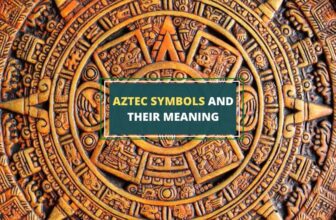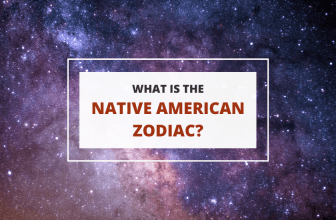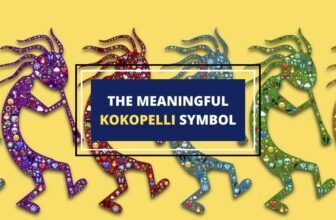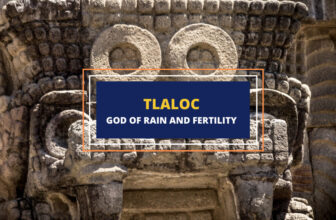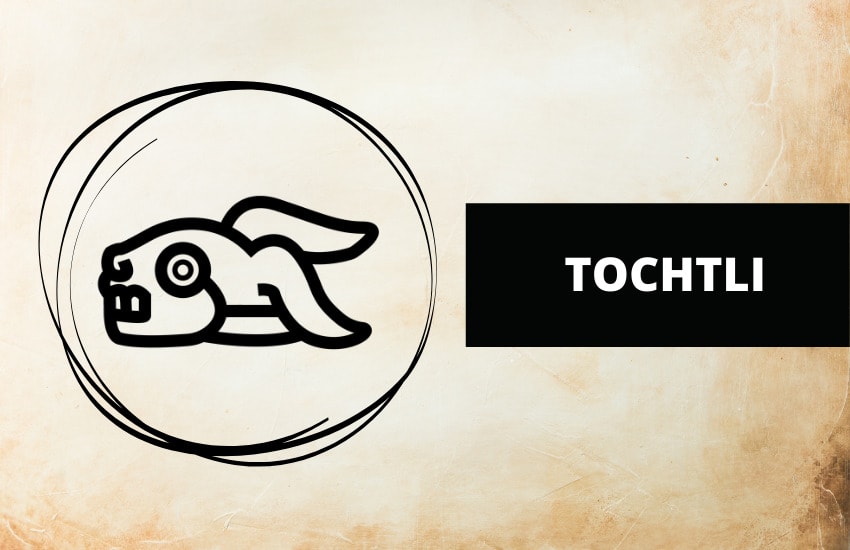
Table of Contents
The day Tochtli, meaning rabbit, is an auspicious day in the 13-day period of the tonalpohualli (the sacred Aztec calendar). Associated with the goddess Mayahuel and represented by the image of a rabbit’s head, Tochtli is a mystical day of self-sacrifice and self-transcendence.
Tochtli in the Ancient Aztec Calendar
Tochtli is one of the 20 day signs in the tonalpohualli, the 260-day ritual calendar of the Aztecs. Its occurrence in the trecenas (13-day periods) would shift with each cycle of the calendar. Similar to Lamat in Maya, the day Tochtli is a day of selflessness, self-sacrifice, and providing one’s service to something that’s much greater than oneself.
This day is also a day for being religious and in touch with nature as well as one’s spirit. It’s a bad day for acting out against others, especially one’s enemies. It’s also associated with fertility and new beginnings.
The Aztecs measured time using a sophisticated system involving two interconnected calendars which provided a list of the religious festivals and sacred dates. Each day in these calendars had a unique name, a number, and a deity associated with it. These calendars coincided once every 52 years which was regarded as an auspicious moment that called for grand celebrations.
The tonalpohualli was a 260-day calendar for religious rituals, while the xiuhpohualli had 365 days and was used for agricultural purposes. The tonalpohualli was broken down into 20 units referred to as trecenas, each consisting of 13 days.
The Rabbit in Mesoamerican Cultures
The rabbit was one of the most favored creatures of the Aztecs for hunting. It was identified with Chichimecs, the hunter-gatherers, and Mixcoatl, the god of the hunt. The rabbit was also an ancient Mesoamerican symbol for the moon.
Centzon Totochtin (The 400 Rabbits)
In Aztec mythology, Centzon Totochtin, meaning four-hundred rabbits in Nahuatl, refers to a large group of divine rabbits (or deities) who often met for drunken parties.
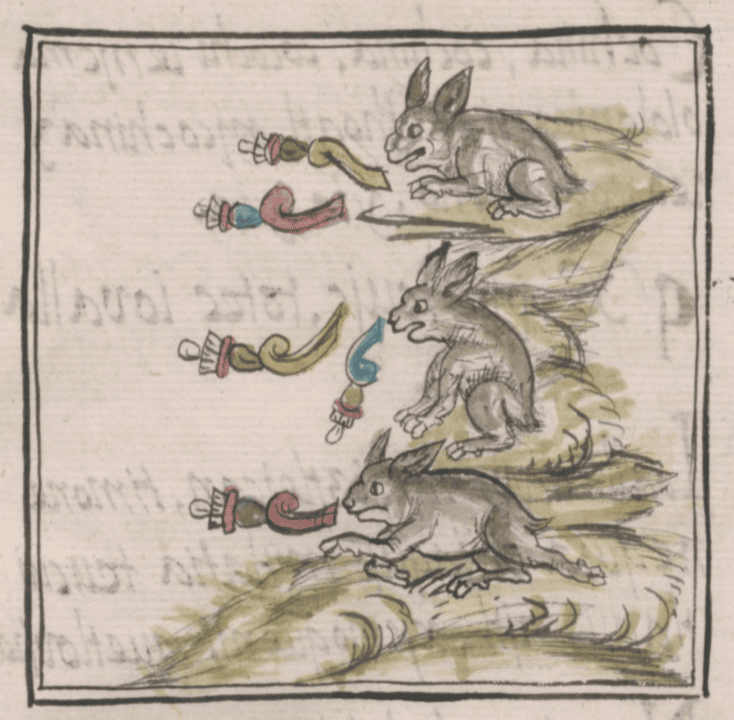
The leader of the group is Tepoztecatl, the Mesoamerican god of drunkenness, and the group is strongly associated with pulque, which they drank at these parties. They were known as gods of intoxication since their diet consisted only of pulque.
According to ancient sources, the goddess Mayahuel fed these four hundred rabbits by her four hundred breasts that produced pulque or fermented agave.
Governing Deity of Tochtli
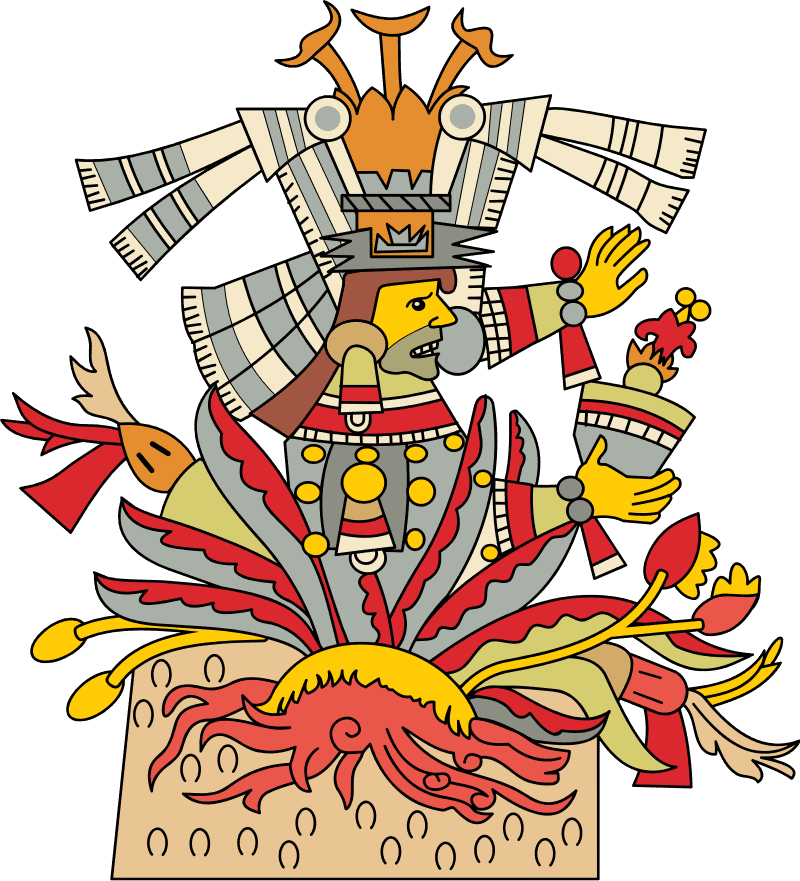
The day Tochtli is presided over by Mayahuel, the Mesoamerican goddess of fertility, and the agave/maguey plant, which was used for making an alcoholic drink known as pulque. Although she’s sometimes described as the pulque goddess, she’s strongly associated with the plant as the source of the drink, rather than pulque, the end product.
Mayahuel is depicted as a beautiful, young woman with several breasts, emerging from the top of a maguey plant with cups of pulque in her hands. In some depictions of the goddess, she’s seen wearing blue clothing and a headdress made of unspun maguey fibers and spindles. The blue clothing is said to represent fertility.
The goddess is sometimes portrayed with blue skin, holding a rope spun from maguey fibers. Rope was one of the numerous products that were made from the maguey plant and used throughout Mesoamerica.
Mayahuel and the Invention of Pulque
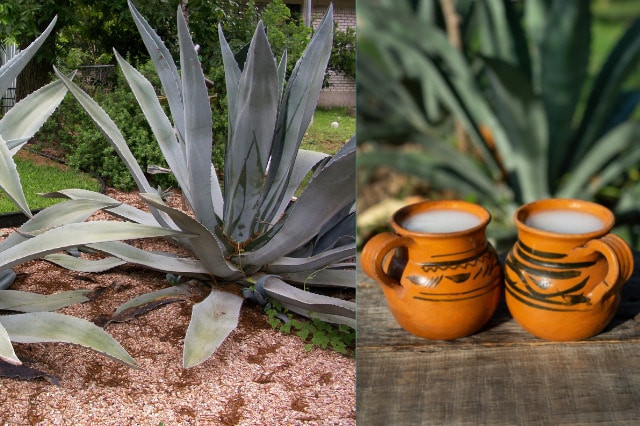
Mayahuel featured in a popular Aztec myth that explains the invention of pulque. According to the myth, Quetzalcoatl, the Feathered Serpent god, wanted to give humankind a special drink for celebrations and feasts. He decided to give them pulque, and sent Mayahuel down to the earth.
Quetzalcoatl and the beautiful Mayahuel fell in love and transformed themselves into a tree to escape Mayahuel’s terrifying grandmother. However, they were found out by the grandmother and her troop of demons known as the Tzizimime.
Quetzalcoatl, being the stronger of the two, managed to escape, but Mayahuel was torn into pieces and eaten by the demons. Quetzalcoatl then collected and buried the remains of his lover which grew into the very first maguey plant on earth.
Eventually, humans began to make pulque from the sweet sap of the maguey plant which was believed to be the blood of the goddess.
Tochtli in the Aztec Zodiac
As mentioned in the Aztec zodiac, those born on day Tochtli love the pleasure of life and dislike conflict. Like the day’s symbol the rabbit, they’re shy and delicate people who are uncomfortable with confrontation and prefer to have control over their own lives. They make pleasant companions, are hardworking, and are hardly ever known to complain.
Conclusion
Tochtli embodies the profound interplay between the Aztec cosmic understanding and their everyday life, capturing the essence of fertility, the sacredness of the natural world, and the nuanced role of divinity. Reflecting on Tochtli and its symbolism offers a window into an ancient philosophy where the cycles of the moon, the earth’s bounty, and human existence were inextricably linked, teaching us the value the Aztecs placed on harmony with the cosmos and the deep reverence for life’s generative forces.




